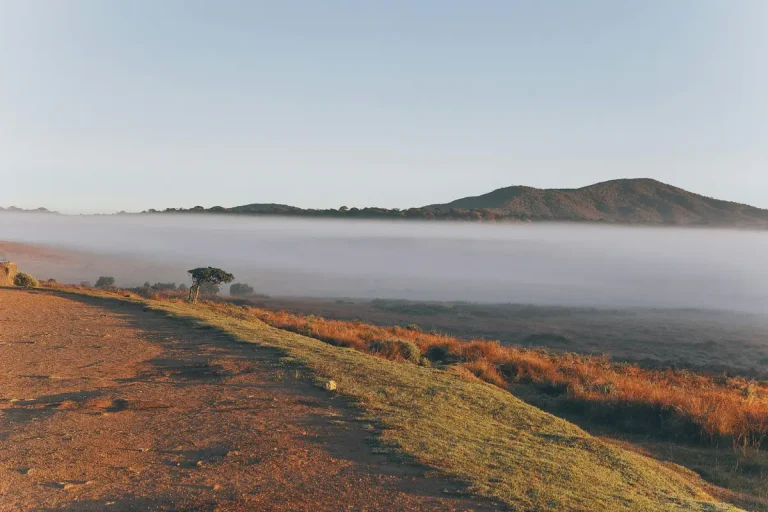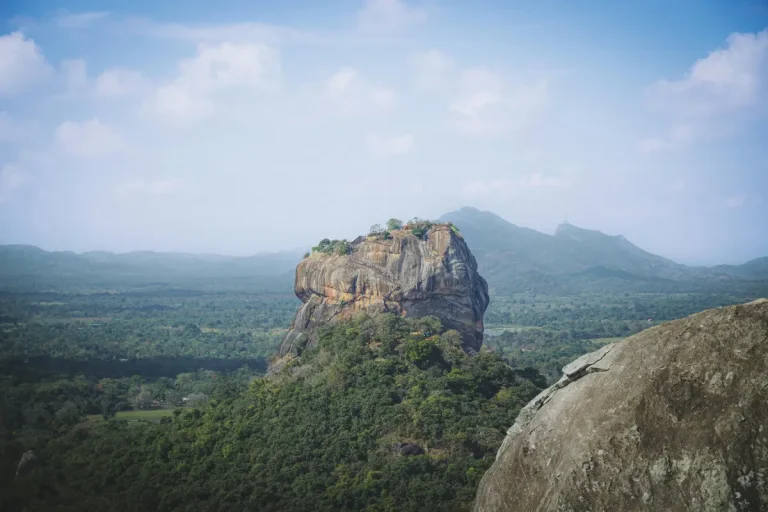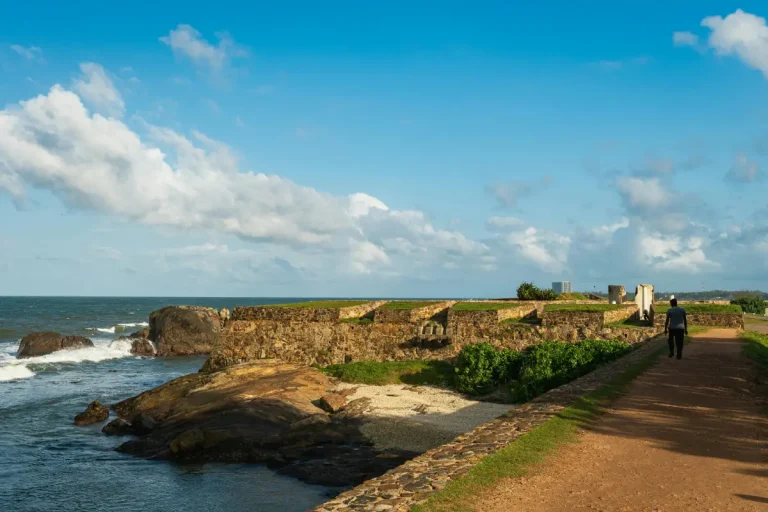Exploring the Mystical Ruins of Ritigala
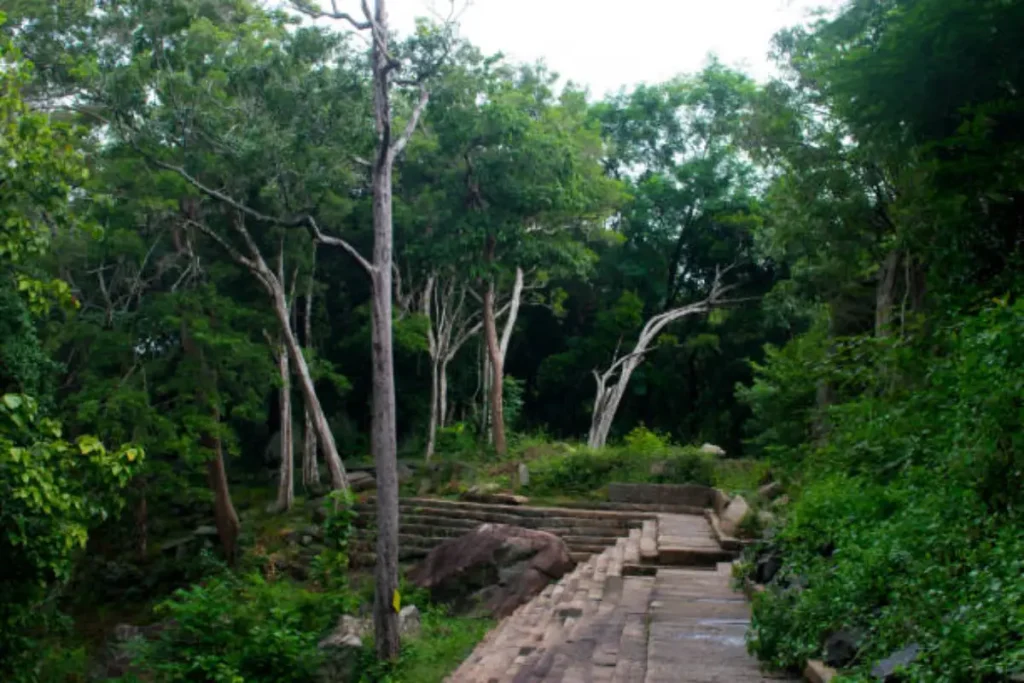
Nestled in the heart of Sri Lanka‘s Cultural Triangle, Ritigala is a place where history, mythology, and nature intertwine to create an experience that is both enchanting and thought-provoking. This ancient mountain range, shrouded in mist and mystery, is home to some of the island’s most intriguing archaeological remains. Unlike the more famous sites of Anuradhapura, Polonnaruwa, or Sigiriya, Ritigala remains relatively untouched by mass tourism, offering visitors a serene and immersive journey into the past.
The Legend and Lore of Ritigala
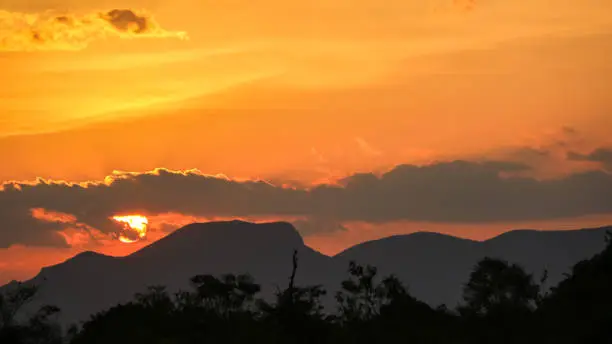
Ritigala is not just a physical place; it is a realm of legends and myths that have been passed down through generations. According to Sri Lankan folklore, Ritigala is believed to be the site where Hanuman, the monkey god from the Indian epic Ramayana, dropped a piece of the Himalayan mountain while carrying it to Lanka to heal the wounded warrior Lakshmana. This mythical connection adds a layer of spiritual significance to the mountain, making it a place of reverence for both locals and pilgrims.
The name “Ritigala” itself is derived from the Sinhala words “Riti” (meaning “seasonal”) and “Gala” (meaning “rock”), referring to the seasonal streams that flow from the mountain. The mountain range rises abruptly from the surrounding plains, reaching a height of 766 meters (2,513 feet) at its highest peak. Its unique microclimate, characterized by cooler temperatures and higher rainfall, supports a diverse ecosystem that is distinct from the dry lowlands below.
A Sanctuary for Ascetics and Monks
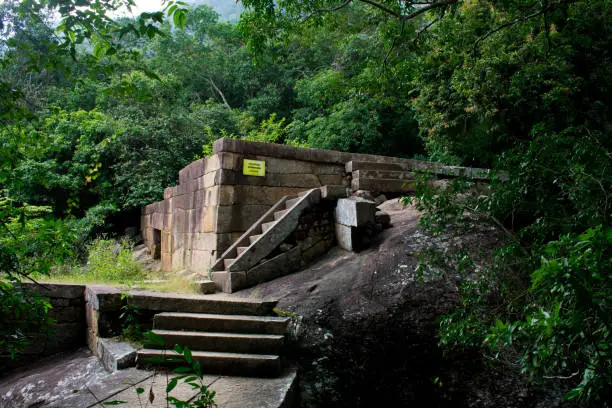
Ritigala’s history as a spiritual sanctuary dates back over two millennia. During the early Anuradhapura period (4th century BCE to 11th century CE), Ritigala became a refuge for Buddhist monks seeking solitude and a life of asceticism. The mountain’s remote location and dense forest cover provided the perfect environment for meditation and contemplation.
The ruins found at Ritigala are believed to be the remains of a monastery complex known as the Ritigala Aranya Senasanaya. Unlike the grand stupas and ornate temples of other ancient Sri Lankan sites, the structures at Ritigala are simple and austere, reflecting the minimalist lifestyle of the monks who lived here. The monastery was designed to blend harmoniously with the natural surroundings, with stone pathways, meditation platforms, and water reservoirs carved into the landscape.
One of the most striking features of the site is the use of massive stone slabs to create pathways and steps. These slabs, some of which are over 10 feet long, were meticulously cut and placed to form a network of trails that wind through the forest. The precision and craftsmanship of these stoneworks are a testament to the ingenuity and dedication of the ancient builders.
The Ritigala Strict Nature Reserve
Beyond its historical significance, Ritigala is also a haven for biodiversity. The Ritigala Strict Nature Reserve, established in 1941, protects the unique flora and fauna of the mountain range. The reserve covers an area of approximately 1,528 hectares and is home to a variety of endemic species, including rare plants, birds, and mammals.
The forest at Ritigala is classified as a dry evergreen forest, a type of ecosystem that is found only in a few parts of Sri Lanka. The cooler temperatures and higher humidity at higher elevations create a microclimate that supports a rich diversity of plant life. Among the most notable species is the Ritigala weed (Aeschynanthus parvifolius), a rare plant that is found only in this region.
The reserve is also a birdwatcher’s paradise, with over 50 species of birds recorded in the area. The dense canopy provides a habitat for endemic species such as the Sri Lanka grey hornbill, the yellow-fronted barbet, and the crimson-fronted barbet. Mammals such as the purple-faced langur, the toque macaque, and the elusive leopard can also be found in the forest, although sightings of the latter are rare.
Exploring the Ruins: A Walk Through Time
A visit to Ritigala is as much about the journey as it is about the destination. The hike to the ruins takes visitors through a lush forest, where the air is filled with the sounds of birds and the rustling of leaves. The trail is relatively easy, with well-maintained paths and stone steps guiding the way. Along the route, you’ll encounter ancient stone bridges, meditation platforms, and inscriptions that offer glimpses into the lives of the monks who once lived here.
One of the highlights of the site is the Panca Guhava, or the Five Caves, which are believed to have been used by the monks for meditation. These caves, carved into the rock face, are simple and unadorned, reflecting the ascetic lifestyle of their inhabitants. Nearby, you’ll find the remains of a hospital complex, complete with a stone bath and medicinal troughs, which suggests that the monks at Ritigala were skilled in the use of herbal medicine.
Another fascinating feature of the site is the Banda Pokuna, a large stone reservoir that was used to collect and store water. The reservoir is an impressive feat of engineering, with a sophisticated system of channels and sluices that allowed the monks to manage water resources efficiently. The serene atmosphere around the reservoir makes it a perfect spot for reflection and contemplation.
The Mystique of Ritigala
What sets Ritigala apart from other archaeological sites in Sri Lanka is its aura of mystery. Unlike the grandeur of Anuradhapura or the dramatic beauty of Sigiriya, Ritigala is understated and enigmatic. The ruins are not as well-preserved as those at other sites, and much of the history of the monastery remains shrouded in mystery. This sense of the unknown adds to the allure of Ritigala, inviting visitors to use their imagination to piece together the story of this ancient sanctuary.
The natural beauty of Ritigala also plays a significant role in its mystique. The mountain’s dense forest, with its towering trees and tangled vines, creates an atmosphere that feels almost otherworldly. As you walk through the ruins, you can’t help but feel a connection to the past, as if the spirits of the monks who once lived here still linger in the air.
Practical Tips for Visiting Ritigala
If you’re planning a visit to Ritigala, here are a few tips to help you make the most of your experience:
Best Time to Visit: The best time to visit Ritigala is during the dry season, from May to September, when the weather is cooler and the trails are less muddy. Early morning or late afternoon visits are ideal, as the light is softer and the forest is more alive with the sounds of birds and wildlife.
What to Wear: Wear comfortable clothing and sturdy footwear, as the hike to the ruins involves walking on uneven terrain. Light, breathable fabrics are recommended, as the forest can be humid.
Guided Tours: Consider hiring a local guide to enhance your visit. A knowledgeable guide can provide insights into the history and significance of the site, as well as point out details that you might otherwise miss.
Respect the Environment: Ritigala is a protected area, so it’s important to respect the environment and follow the rules of the reserve. Avoid littering, stay on designated trails, and refrain from disturbing the wildlife.
Combine with Other Sites: Ritigala is located within the Cultural Triangle, making it easy to combine your visit with other nearby attractions such as Anuradhapura, Polonnaruwa, and Mihintale.
Conclusion: A Hidden Gem Worth Discovering
Ritigala is a place that defies easy categorization. It is at once an archaeological site, a nature reserve, and a spiritual sanctuary. Its understated beauty and sense of mystery make it a destination that appeals to those who seek a deeper connection with history and nature. Whether you’re a history buff, a nature lover, or simply someone looking for a unique and off-the-beaten-path experience, Ritigala offers something truly special.
As you stand among the ancient ruins, surrounded by the sounds and sights of the forest, you can’t help but feel a sense of awe and wonder. Ritigala is a reminder of the enduring power of nature and the human spirit, a place where the past and present coexist in perfect harmony. It is a hidden gem that deserves to be discovered and cherished by all who visit Sri Lanka.

